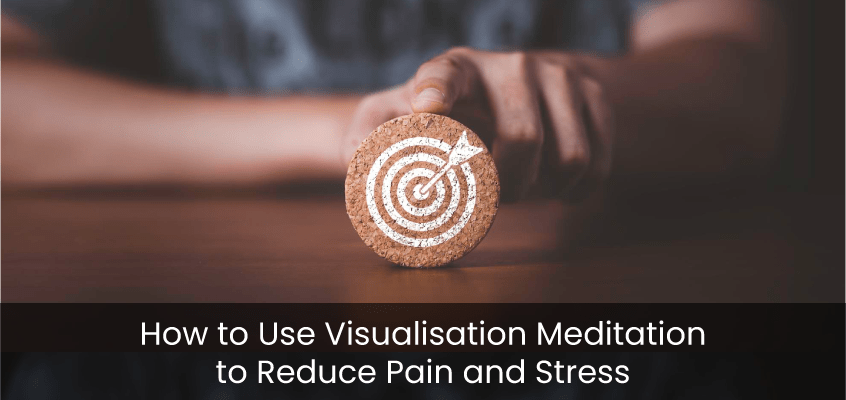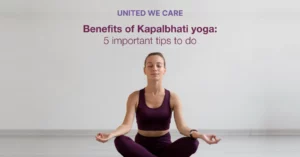Buddhists believe that anyone can benefit from visualisation meditation because the brain is susceptible to visual stimuli. Visualisation is a method that allows us to feel the emotions connected with reaching a future objective. Numerous studies have shown that the practice has positive health effects and helps alleviate stress and depression.
What is visualisation meditation?
A visualisation is a form of meditation in which the practitioner focuses on a positive image, idea, feeling, or sensation. In this meditation, the person visualises an image or concept and focuses on it. They activate their imagination to generate visual pictures and scenes, making the exercise more enjoyable than sitting quietly and thinking.
Some find visualisation meditation sufficient when performed alone, but others use it with yoga or mantra meditation to strengthen concentration, create complete relaxation, and avoid distractions.
Why Is visualisation so effective?
When a person visualises, they create images that help them learn more about themselves and others. In addition to altering physical actions, visualisation can also change cognitive processes. For instance, if you are concerned, you can try to picture being in a secure place surrounded by loved ones to help you feel calm again. Or, if you are feeling depressed, you could visualise yourself surrounded by and infused with a cheerful pink colour.
Visualisation meditation integrates a person’s emotional and psychological states with physical objects. It enables them to see what they need to change or express in their lives and provides them with the resources for transformation. Visualisation meditation connects people to their inner wisdom and guides them to their maximum potential.
How to practice visualisation meditation
Before learning how to practice visualisation meditation, you must understand a few guidelines:
- It would help if you reflected on your life to get the full benefits of visualisation meditation.
- Regular practice is advised.
- If you wish to connect with your inner self more deeply, you should aim to make your visualisation sessions longer.
- If you have meditated before and are interested in trying visualisation meditation, the techniques used would be similar to your usual meditation practice.
Here are the steps to practice visualisation meditation:
- Close your eyes, find a comfortable posture to sit in, make sure there is no tension in your body, and try to make your mind as completely relaxed as possible.
- Consider the picture you choose to focus on throughout your visualisation practice.
- Inhale and exhale while seeing your body or the visualised object stretching and contracting with each breath.
- Keep your mind from getting diverted toward other feelings and emotions, and stay present and focused.
Tips for beginners
If you at a beginner to visualisation meditation, you can use a physical object to assist you with the visualisation. Start small and advance gradually. Even five minutes a session can be beneficial if you’re just getting started with meditation. You can raise it to 15 minutes or longer as you get more comfortable. Dedicate your time to maintaining a regular meditation practice.
Benefits of visualisation meditation
Meditation offers various health benefits, including lowering blood pressure and pulse rate and relaxing the mind. Visualisation can also help you make steady progress toward your objectives. Here are some benefits of this practice:
- Positivity: Your mental outlook will become more positive the more you practise visualisation meditation. You will also develop a problem-solving attitude and a more optimistic, success-oriented mindset.
- Better perspective: Because visualisation meditation encourages you to concentrate on your goals, you will perceive them as more realistic and immediate. Once you have focused intently on them, they will remain with you and influence your good choices.
- Emotional preparedness: Meditation’s calming effects assist you in mentally preparing for the obstacles you’ll encounter on the path to success. Also, when you achieve these objectives, you will be prepared to experience the joyful and exciting sensations accompanying success.
- Enhanced vision: Focus is a skill that can grow and evolve as you practice it. If you work hard enough, you’ll find that you can focus as well as you need to when it matters.
- Enhanced motivation and stamina: Meditation typically results in improved energy. Relaxing and breathing fresh air will boost your physical energy, and you will also experience increased mental vitality. In addition, your motivation will grow as you keep practising.
- Ready for action: With a clear strategy and increased effort, you can move toward your objectives regularly.
How can visualisation meditation help maintain mental peace?
Visualisation meditation has a scientific basis. While visualising, a person thinks about a specific scenario and imagines how it might change. Incorporating visualisation into a regular meditation practice might boost the benefits of visualisation meditation by allowing individuals to focus their cognitive thoughts on a preferred result.
When you visualise, you concentrate on a particular object, event, person, or outcome and imagine it becoming a reality. To practise mindfulness, you can use visualisation or add it to your regular meditation to make it more effective. Visualisation helps you direct a relaxed mind toward specific goals.
Conclusion
Visualisation meditation involves forming a clear and meaningful image in your mind, and it can lead to complete relaxation and drive you toward your aspirations and goals. Visualisation exercises can help you direct your mind where you would like to go, whether that’s a scenic waterfall or a sense that you can achieve goals.
Visualisation meditation does not come naturally to everyone and may initially feel weird. But with regular practice, the technique will feel more natural and enhance your health and mental energy.









